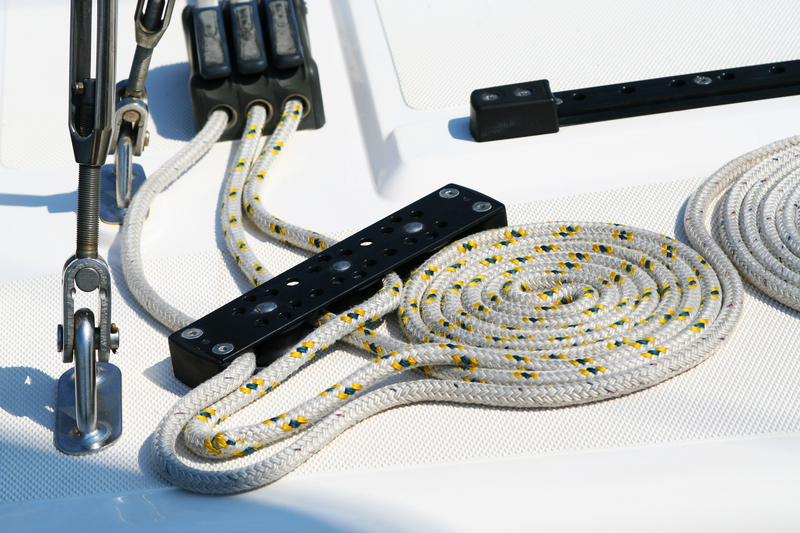Storage Secrets Revealed: How Experts Preserve Sofas for Years
Sofas anchor our living rooms, witnessing movie nights, deep conversations, and family gatherings. Yet, when it's time to store these beloved pieces--whether for a move, a renovation, or seasonal change--improper storage can quickly turn a cherished couch into a faded, sagging relic. Expert sofa preservation isn't a mystery, but an art and science blending the right techniques, materials, and conditions. Ready to learn the storage secrets that professionals swear by? Let's dive into how to preserve your sofa for years and keep it looking as pristine as the day it arrived.
Why Proper Sofa Storage Matters
Storing sofas isn't just about finding a space and shifting your furniture in. Improper storage leads to:
- Mold, mildew, and unpleasant odors
- Warped frames and sagging cushions
- Fading upholstery and stubborn stains
- Pests and insect infestations
- Permanent structural or aesthetic damage
Without long-term sofa preservation strategies, significant depreciation occurs. A well-kept sofa, though, holds its value and beauty--becoming an heirloom, not a headache.

Choosing the Right Storage Location
Climate-Controlled Storage: The Gold Standard
Experts universally recommend climate-controlled storage for sofas. These units maintain optimal temperature and humidity levels, preventing the main culprits of sofa deterioration: extreme heat, cold, and moisture.
- Heat makes fabrics brittle and dries out leather, causing cracks.
- Cold contracts materials, warping frames and splitting wood.
- Humidity multiplies the risk of mildew, mold, and rust on metal frames.
Tip: If climate control isn't available, prioritize a cool, dry place indoors--like a finished basement or spare bedroom--over a garage or outdoor shed.
Off-the-Ground Storage
Never store sofas directly on the floor. Even inside, concrete or tile can trap moisture.
- Place wooden pallets, blocks, or thick plastic sheets beneath your sofa.
- This prevents water wicking up from the ground and allows for better air circulation.
Preparing Your Sofa for Storage: Step-by-Step
1. Deep Clean Every Inch
Storage experts always start with meticulous cleaning.
- Vacuum all surfaces, under cushions, and in crevices to remove dust, hair, and debris.
- Spot-clean stains with a fabric-safe cleaner for upholstery, or a designated leather product.
- For pet odors or smoke, use an odor-neutralizing spray.
- Allow the fabric to dry completely before storing--moisture invites mold!
Why? Trapped crumbs, dirt, and dampness are prime food for bacteria and mold in storage.
2. Disassemble When Possible
Most sofas have removable parts: legs, cushions, sometimes arms or backs. Disassembling reduces breakage risk and allows more compact, safe storage.
- Take photos as you go for easy reassembly.
- Seal hardware in a labeled bag and tape it to the main frame.
- Store cushions separately in breathable bags.
3. Protect With the Right Covers
Avoid plastic wraps that trap moisture. Use breathable fabric covers or specialized furniture blankets.
- For long-term sofa preservation, heavy cotton or wool keeps dust out and allows airflow.
- Old bed sheets or blankets work in a pinch.
- Never cover your sofa with airtight plastic for more than a few days.
For leather sofas, use a moisture-wicking cloth to prevent sticking and cracking.
4. Treat Upholstery and Leather
- Apply a fabric protector spray to guard against future stains and mildew.
- For leather, experts swear by a quality leather conditioner to keep the surface supple and crack-free.
Pro tip: For velvet or delicate materials, consult the manufacturer's storage or cleaning guidelines to avoid permanent damage.
5. Keep It Elevated and Supported
- Storing sofas on blocks or pallets keeps airflow constant and prevents dampness from seeping in.
- Place support underneath longer segments to prevent warping or sagging over time.
Expert Long-Term Storage Strategies
Prioritize Ventilation
High humidity causes more damage than dust. Good air flow stops excess moisture from settling into your furniture.
- Keep items spaced apart--don't compress belongings around your sofa.
- Leave at least six inches between the wall and the sofa to allow for circulation.
Store Upright When Possible
If space is tight, some experts recommend storing smaller sofas vertically on their side, using sturdy supports.
- Ensure all padding is repositioned and no weight is placed on delicate arms or legs.
- Never rest heavy items on top of your sofa during storage.
Pest Prevention Methods
Moths, mice, and beetles are attracted to upholstered furniture, especially when undisturbed.
- Place pest-repellent sachets or cedar blocks around (not inside) the sofa.
- Avoid food storage in or near the sofa.
- Regularly inspect for signs of infestation, even in storage.
Regular Checks and Maintenance
Experts don't just stash and forget.
- Every few months, inspect the storage area for leaks, humidity, or pest issues.
- Reapply leather conditioner or fabric protector for prolonged storage.
- Vacuum dust off the covers and adjust as necessary.
Special Considerations for Different Sofa Types
Leather Sofas
- Never store leather sofas near direct sunlight or radiators, even in storage.
- Condition leather before and after storage to keep it soft and supple.
- If possible, release tension in the leather by stuffing sofa covers with clean, dry towels or pillows.
Fabric Sofas
- Ensure fabric is completely dry before storage to prevent mildew.
- Use vacuum-sealed bags for removable cushion covers, storing them separately to minimize space and moisture exposure.
- Invest in anti-moth and anti-mildew sachets specifically designed for fabric upholstery.
L-shaped or Sectional Sofas
- Disassemble completely where possible and wrap each section to avoid abrasion.
- Store largest sections flat, supporting under the frame to prevent bending.
Sofa Storage Mistakes to Avoid
Even well-meaning homeowners sometimes make crucial sofa storage errors:
- Using tight plastic bubble wrap which traps condensation, leading to mold.
- Storing sofas in garages or sheds where temperatures swing wildly.
- Stacking heavy boxes on top of the sofa, crushing frames and upholstery.
- Neglecting to clean first, allowing crumbs to attract pests over time.
- Forgetting periodic checks, so problems are not caught until it's too late.
Bringing Your Sofa Out of Storage
- Unwrap carefully: Shake out covers and check for any pests or mold before bringing indoors.
- Clean and air out: Allow the sofa to air out in a ventilated room. Use a fabric refresher or professional cleaner.
- Reassemble and inspect: Check all joints, tighten screws, and inspect for any signs of damage. Repair as necessary before use.
- Condition and protect: Reapply fabric protectant or leather conditioner. Fluff cushions and replace covers.
Careful reintroduction ensures your sofa is ready to enjoy once more, safe and clean!
Bonus: Upgrading Your Sofa Storage Game
Looking to take your sofa preservation to the next level? Here are a few advanced tricks used by restoration pros:
- Dehumidifiers: In humid climates, run a small dehumidifier in your storage space to keep moisture at bay.
- UV protection spray: For long-term storage, certain sprays shield fabrics from light-induced fading.
- Scented sachets: Lavender or cedar both deter pests and keep your sofa smelling fresh.
- Furniture cradles: Special supports maintain sofa shape, especially for antique or vintage designs.

Expert Advice: Frequently Asked Questions
Can I store my sofa vertically to save space?
Yes, but it's crucial to support the frame evenly, cushion delicate points, and ensure the weight is not resting on exposed arms or fabric.
How long can sofas stay in storage with these preservation methods?
With optimal conditions--cleaning, disassembly, breathability, and periodic checks--sofas can stay in storage for several years without deterioration.
Do I need to professionally clean my sofa before storage?
While a professional clean is ideal for deep stains or for delicate materials, most sofas can be prepared at home with thorough vacuuming, spot cleaning, and airing out.
What's the biggest risk when storing a sofa?
The top threats are moisture, pests, and physical deformation. A dry, well-ventilated, pest-free environment and correct support prevent these issues.
Conclusion: Giving Your Sofa a Second Life
Preserving your sofa in storage is about more than mere stashing--it's a commitment to its longevity, value, and the memories it holds. With expert strategies and careful attention, you can return to a sofa that's as inviting as ever, no matter how long it's been tucked away. Remember the secrets: cleanthoroughly, cover smartly, store safely, check regularly. Your future self (and guests) will thank you!
Ready to take the next step in furniture preservation? Apply these secrets, and enjoy a pristine sofa for decades to come! If you have questions or tips of your own, share them in the comments--let's help everyone enjoy long-lasting, beautifully kept sofas!



